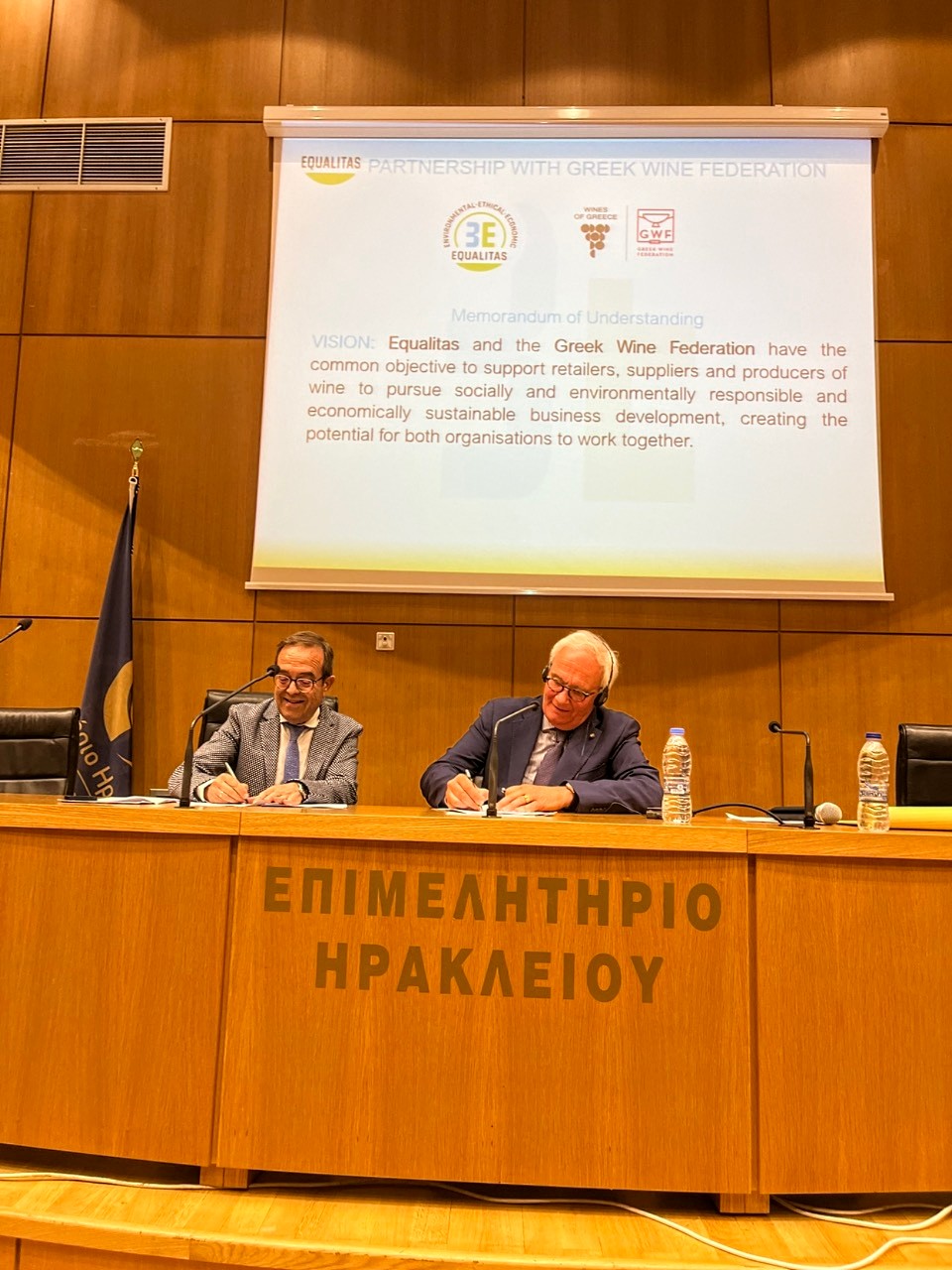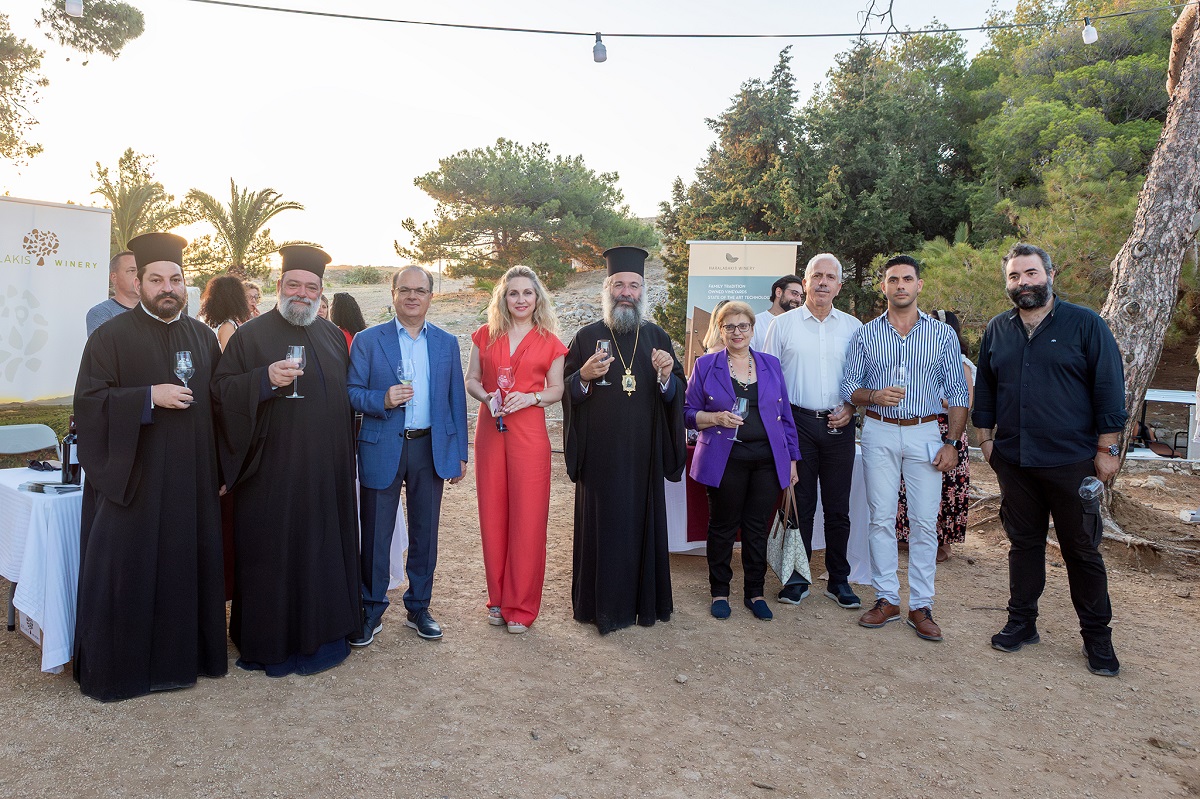Άρθρο: Why wines from Crete deserve the attention they are getting

Each of the five PDOs within the PGI of Crete, specialises in producing high-quality wines from indigenous varieties planted on a mosaic tapestry of soils and at different altitude ranges. Whilst winemaking on the island dates back some 3,500 years it is only in recent years that its wines are starting to appear on top restaurant wine lists around the world. Robert Mason reports back on an exclusive masterclass of Crete wines, hosted by Demetri Walters MW and the chance to explore its PGIs and wine styles for himself.
By
“Despite millennia in the business, Cretan wine is now having a moment as one of the new kids on the block,” writes Robert Mason as he experiences its wines for himself at a recent London tasting.
Cretan wine has serious legacy. An enduring craft recorded in the island’s rich history; wine has been produced, shipped, sold and consumed in this Grecian outpost since the Minoan, Phoenician and Byzantine eras. In fact, archaeologists discovered lactones hinting at the use of oak between 1,900 to 1,700 B.C. Crete can also boast to be home to an intact amphora wine vessel dating back 3,500 years.
All this makes it the more humbling to witness the new era of the island’s winemakers and their wines. Despite millennia in the business, Cretan wine is now having a moment as one of the new kids on the block. Certainly on the global scene at least. And it is with this renewed impetus that Demetri Walters MW and members of Wines of Crete, Dr Elli Gkika and Nicolas Miliarakis, took to showcase the diversity and quality of the island in an exclusive masterclass tasting, supported by EU funding, in central London.
Mosiac Tapestry

Eleven wines showed blind from relatively obscure, native varieties and across all spectrums of style, which were introduced by Walters as being varieties which “all have an ancient genetic material”.
Crete has an “authentic sense of place,” as Walters so eloquently exclaims, from winemakers “with a very collaborative philosophy.” This sense of togetherness was evident amongst the 12 masterclass attendees and the handful of Cretan producers also present.
Walter’s suave and erudite Radio 4 voice compellingly made the case for Cretan wines, the culture and its charm through an “authenticity which goes with diversity.”
That diversity is amplified by the aspect, altitude and climate. With peaks of up to 2,456 meters above sea level, Crete shows its ability to retain acidity amidst hot climes and low rainfall, producing a myriad of styles among its indigenous and its interloping international varieties.
Around 5% of plantings are to those international varieties, such as Cabernet Sauvignon, Merlot, Syrah, Grenache, Mourvedre and Roussanne, which were brought from mainland Europe in the 1970s to satisfy the commercial demands of export markets.
Winemaker and oenologist, Zacharias Diamantakis, then noted this was followed by phylloxera in the late 1980s. So although Crete saw an expansion in international trade, it was somewhat a bitter-sweet trade off. Thankfully the little known, ancient, and until recently almost extinct, native varieties such as Vilana and Thrapsathiri, planted on sandy soils, are well conditioned to cope with the trials and tribulations of vineyard adversities.

Each of the five PDOs within the PGI of Crete, specialises in producing high-quality wines from indigenous varieties planted on a mosaic tapestry of soils and at different altitude ranges. “This ancient genetic material spanning thousands of years, [the] dry environment, no rain for six months of the year – not through design – means that Cretan grapevines know how to endure, they are better adapted to the climate [than international varieties]”, states Walters.
As Walters continues, this “very large and established set of native grapes” produces an evident large range of styles, as shown in the tasting: five whites, one orange, one rosé and four reds, all dry and all different.
Tasting History
- Muscat of Spina hails from the oldest grape family, named after the high altitude town in the west of the island and is a clone of Muscat Bland à Petits Grains. Thin skinned, large berried and similar to the ancient Muscats of Alexandria and Samos. This dry, vibrant and fragrant wine showed almost a hint of spicy aromatics alongside its typical characteristics of flora and grapes. Nothing too heady about this well-balanced and easy drinking summery style. “This would work brilliantly in bag in box,” claims Walters.
- Vilana, Vidiano and Muscat of Spina blend. Here the Muscat provides a delicate lift in the aromatics, complimenting the light to medium bodied, moderate to fresh acidic variety of Vilana. It also is a nice juxtaposition to the waxy, weighty 13th Century-old Vidiano. Ever-so-slightly foxy in its aromas with gentle herbal tones and some soft stone fruit culminating in a light, slightly chalky finish.

- The Assyrtiko here is light and fragrant as opposed to the much richer, creamier and more alcoholic versions from Santorini. Low yielding plants thrive in dry, very warm areas which offers a bright bite of acidity in the finished wines. This one was indeed light and at only 12% abv, it was a perfect aperitif-style wine: delicate fragrance of blanched almonds and lemon pith leading to a more textured, weighty palate. A lovely restrained alternative to the more famous relative across the water.
- Meaning ‘prolific‘ in Greek, Thrapsathiri is only produced on the island and perhaps holds the key to modern Cretan white wines. Discovered and saved from extinction just 10 years ago, only five producers cultivate this old relative of Malvasia. A peachy, stony and pretty wine displaying some bitter phenolics and weight on the palate, combined with a saline, juicy acidity making it ideal with mezze, moussaka or spanakopita.
- Dafni’s ancestry is first recorded upon a Minoan copper pot inscribed with the name Dafnitis Oinos and is the most characterful of Crete’s varieties. Distinctly scented with herbal perfume reminiscent of the Bay laurel. It is like tasting history! This example was fermented spontaneously in barrel to reveal nutty kernel characteristics, delicate bay leaf perfume and flinty aromas. The palate showed plenty of these nuances along with fresh acidity and a slightly warm, peppery alcohol bite.

- Orange wine made from red grapes? Yes. As Walters began to explain: “Technically this is a Blanc de Noirs still wine but made from the low aynthocynnin variety Romeiko. But made as a skin-contact orange wine”. Delicate floral aromas with marzipan and crunchy quince. It tasted more like a non-fortified cross between Banyuls and a dry oloroso. Mind boggling and quite unlike anything I have tried before, and I loved it.
- Liatiko is a cultivar with history as far back as the 3rd Century B.C. which in recent years has become better understood by winemakers. It is also a grape which can make many styles, perhaps encapsulating Cretan winemaking philosophies. Here, this vibrantly hued rosé is marked by its gentle herbaceousness, fresh acidity and its wild red berry fruit.
- Liatiko as a red wine is often referred to as the Nebbiolo of Crete. Unrelated but similar in profile, tannin structure and colour. This one was a prime example and displayed deep, bloody flavours both earthy and peppery but with a refined tannic grip.
- The last example of Liatiko almost verged towards a Tuscan Sangiovese. At five years of age, it showed a tomato leaf quality, was broad structured with fine acidity and some heft and muscle on the palate. It is clearly a versatile and age-worthy big hitter.

- Kotsifali once used to be the most planted grape until Liatiko increased in hectarage. “An intense and full variety with fine tannins and pedigree”, Walters proudly declares. Blended here with other native variety Mandilari and a touch of Syrah to make a generous, intense and rustic wine, both blackcurranty and slightly medicinal. A great alternative to Mourvedre or an Aussie Cab.
- Finally, Mandilari completes the star-studded bill: rounded, aromatic, bold and tense with deep dark fruit and tight phenolic grip.
Back to the Future
From this brief snapshot of Cretan wine, the theme was clear: one of authenticity, care and diverse characteristics. The winemaker Miliarakis underlines the togetherness of the island’s producers: “Everything is hand-made, hand cropped.” He continues: “[The] focus of Crete: what is our identity? We are too young to know […] 15 years ago, around 30 of us created an association to promote Cretan wines”.
With around 90% of the island’s production, the founders of Wines of Crete make approximately 2.5 million bottles a year and their “focus is on indigenous varieties” as Walters sums up this exciting neo-Cretan wine scene.
- You can find out more at Wines of Crete website.


